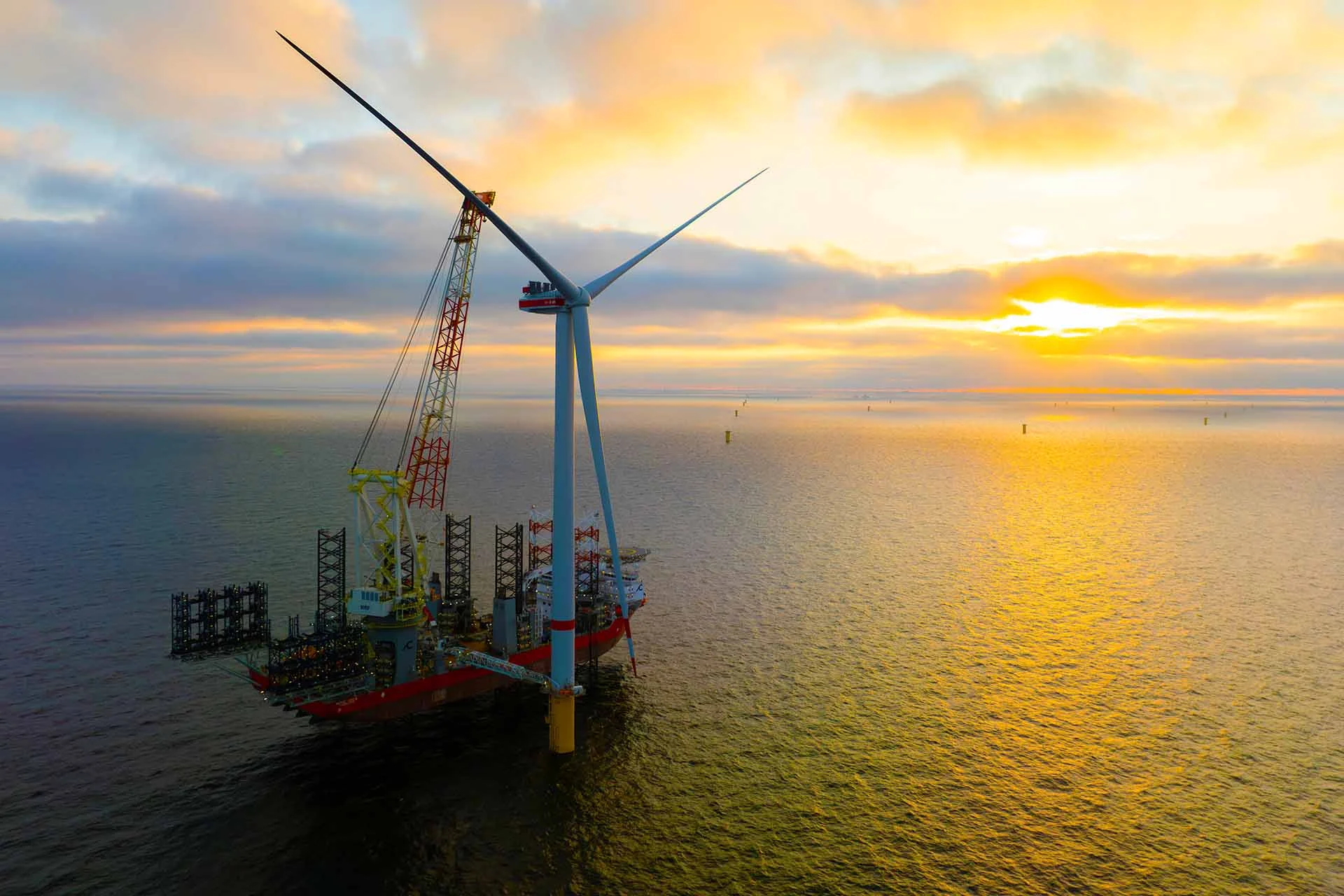Could a single spin of a turbine blade truly power four households for an entire day? In the chilly waters of the North Sea, something huge is turning, and it’s about to change how Germany powers its future.
Off the coast near Borkum, workers have hoisted the first massive turbine of Germany’s largest offshore wind farm, He Dreiht, named in Low German meaning “it spins.” But this isn’t just another wind farm, it’s a global milestone using some of the most advanced wind technology ever built.
Each turbine is a towering 15 megawatt giant crafted by Vestas, the Danish wind energy leader. To put that into perspective, just one turbine rotation generates enough electricity to sustain four homes for 24 hours. Once completed, 64 of these titans will collectively produce 960 megawatts, enough to power approximately 1.1 million German households.
A Big Project, Without Government Checks
What makes He Dreiht especially noteworthy? EnBW, the energy company behind this ambitious project, has boldly decided to go forward without any government subsidies. Michael Class, who heads EnBW’s renewable projects, explains, “This project is vital in achieving our goal of expanding our renewable energy capacity from 6.6 GW to over 10 GW by 2030. And we’re doing it independently.”
This bold move signals a broader shift. Companies aren’t waiting for incentives; they’re moving ahead confidently, banking on renewable energy as both viable and profitable.

Not Just Big, But Smart
The turbine at the heart of He Dreiht, the Vestas V236, isn’t just large; it’s incredibly efficient. With blades measuring over 115 meters long, these giants cover an area larger than six soccer fields. Impressively, their smart design means they deliver consistently high energy output even at varying wind speeds, dramatically reducing the number of turbines needed to achieve massive power generation.
Nils de Baar, president of Vestas Northern & Central Europe, proudly acknowledges this achievement. “Installing our first V236-15.0 MW turbine marks a huge step forward, not just for He Dreiht but for Germany’s renewable future. We’re building a secure, affordable, and sustainable energy grid.”
A Peek Behind the Scenes
Building offshore wind isn’t straightforward. He Dreiht sits about 85 kilometers northwest of Borkum, where crews are battling rough seas, gusty winds, and technical challenges. At peak construction, over 500 workers and 60 ships navigate logistical hurdles daily, installing massive foundations and carefully lifting enormous blades into place.

From loading parts in Denmark’s Esbjerg port to a 12-hour sea journey aboard the Wind Orca vessel, every step is precisely planned. Meanwhile, underwater cables are simultaneously laid to ensure smooth energy flow from turbine to mainland.

Partnerships Driving Success
This massive undertaking isn’t a solo act. Allianz Capital Partners, AIP, and Norges Bank Investment Management collectively own 49.9% of the project, highlighting how international investment is flowing confidently into renewables.
Global Impact and Local Gains
The benefits extend far beyond renewable energy. By creating hundreds of jobs and boosting local economies, projects like He Dreiht also demonstrate renewables’ practical economic advantages.
And the potential for growth is enormous. Since launching their first prototype in 2021, Vestas has secured over 14 gigawatts of global orders for their 15 MW turbines, showing clear market confidence in large-scale offshore wind energy.
A Bright, Breezy Future?
Germany’s ambitious move with He Dreiht could set a new standard globally. If this enormous wind farm succeeds, it could inspire more subsidy-free renewable projects worldwide, proving once and for all that clean energy can be both financially viable and immensely practical.
What do you think? Could projects like He Dreiht become the norm, shifting us rapidly toward a cleaner, renewable-powered future? Share your thoughts, and let’s keep this conversation spinning.





The USA will just keep burning stuff and arguing about it 🇺🇸🇺🇸🇺🇸